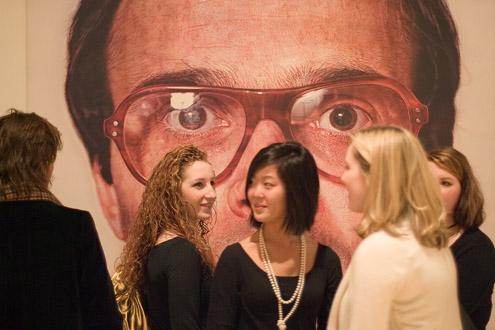During the recent flurry of final exams, Donna Williams, Chief Audience Development Officer at the Metropolitan Museum of Art, and Katherine Nemeth, Assistant College Marketing Coordinator, visited the Masters of Arts Management program here at Carnegie Mellon University to share their thoughts on cultivating diverse arts audiences. With the resources of one of the world’s preeminent art museums, including a robust digital media department that develops impressive audio, visual, and interactive content across multiple channels, we thought surely technology must play an integral part in the endeavor to make the Met accessible and relevant to all. And indeed, the multi-faceted roles of technology are not to be overlooked. So it was a humbling and insightful reminder to hear that even at the Met, audience development is ultimately a personal pursuit—bolstered by advancements in online communication and social media, but driven by live, in-person interaction. The tactics Donna and Katherine most heavily utilize to develop new audiences depend not on finance or collection size, but on relationship-building. Key traits they cite in order to do their work include being warm, approachable, and open-minded. “You have to like people,” Donna comments. “People want to know that you respect who they are.” Engendering trust takes time, so Donna and Katherine spend much of theirs outside the museum, meeting with community leaders, talking to students, and attending local events. To ensure those individuals have a voice, the Met formed advisory committees comprised of community representatives to help plan events, gauge interest of the demographics they represent, and serve as a bridge between the museum and local audiences. The College Group at the Met focuses exclusively on serving college-age students in the tri-state area, while the Multicultural Advisory Committee represents New York City’s many ethnic communities.
For those external bridges to be successful, relationship-building must occur inside the organization as well. When the Multicultural Audience Development Initiative (MADI) began fifteen years ago, the support of senior staff was essential, but so too was that of all museum personnel whose work function the initiative would effect in some way. Donna recalls taking brown bag lunches to each of the curatorial departments as a peace offering while she explained the new project and listened to their thoughts and concerns. What was initially at times a challenging collaboration ultimately yielded such creative partnerships as the Met’s game night “Are You Smarter Than a Curator?” and the new video series “82nd & Fifth,” featuring 100 works of art and comments from Met curators inspired by them.
That the museum’s curatorial departments now reach out to the audience development department when planning new exhibits is one measure that lets Donna and Katherine know their efforts are working. Identifying indicators of success is another element they cite as essential to effective audience development. When the rationale for spending so much time going out into the community is to “make the museum come to [the community],” success occurs when those same people instead begin to come to the museum. Similarly, when local organizations and corporations whose support was initially sought by the Met now offer that support and seek to be involved, audience development is making an impact. And while participation, not membership, is the primary goal of the Met’s audience development programs, increases in the number of museum members among demographic groups that were previously underrepresented is another strong mark of success. No single factor, of course, is responsible for these changes, but if Donna and Katherine’s experiences are any guide, it seems that in our increasingly connected techno-landscape, personal relationships are still a key ingredient.
Photo credit: "College Group at the Met," The Metropolitan Museum of Art.


